Blu-rays from Kino Lorber
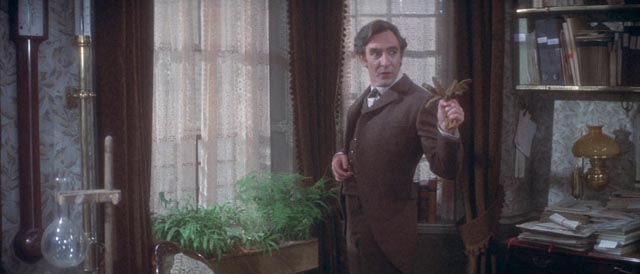
Kino Lorber, although most of their releases are bare bones, have really ramped up their output over the past year or so, offering a wide range of movies in generally fine transfers. In conjunction with Redemption Films, they’ve been issuing a line of Euro horror largely focused on the work of Jean Rollin and Jess Franco; there are also exploitation classics like the Halperins’ White Zombie and Jean Yarbrough’s The Devil Bat; Italian ’70s exploitation; plus foreign and arthouse titles; not to mention fine editions of Curtis Harrington’s Night Tide and Val Guest’s Quatermass Xperiment. They’ve also been mining some of the more obscure byways of the ’70s with releases like Robert Culp’s cynical detective movie Hickey & Boggs and three recent titles of varying quality and interest.
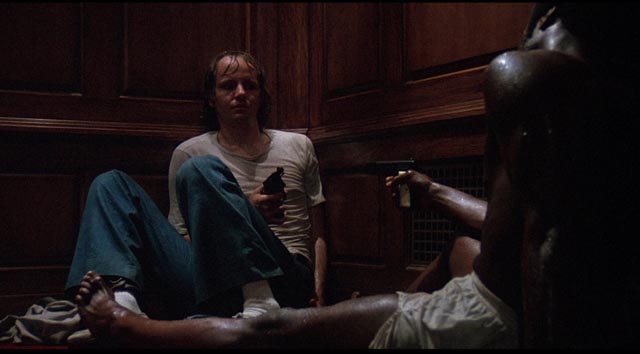
Report to the Commissioner (Milton Katselas, 1975)
I have no record of seeing Milton Katselas’ Report to the Commissioner when it was released in 1975, though I had previously read the James Mills novel it was based on. This is a little puzzling as back then I pretty much saw everything that came along. However, I spent most of 1975 living in England and maybe it didn’t get a release over there – or came along later, after I’d returned to Winnipeg where it had probably come and gone long ago. I’m sure I would have seen it if I’d had the opportunity, and I’m glad I finally caught up with it via the new Blu-ray. Nostalgia probably plays a part, but I’m finding myself really enjoying a lot of movies from that period; it may have something to do with the fact that this was the time when I became really conscious of what I was watching, aware of the ways in which movies were put together, how they worked … in short, that was when I woke up to film as an art form. The key year was perhaps 1973, when I saw in fairly rapid succession Mean Streets, Badlands, Electra Glide in Blue and Don’t Look Now, a group of movies which together taught me more about the expressive possibilities of film than anything I had seen before.
Katselas’ movie isn’t in that league, perhaps, but it does have the distinctive sensibility of that time, a gritty cynicism about the moral bankruptcy of America at the end of the Vietnam period. Like Sidney Lumet’s Serpico from a couple of years earlier, it also deals with the crushing defeat of the idealism which drove ’60s counter-culture and the anti-war movement. Newly assigned to a tough precinct, naive detective Bo Lockley (Michael Moriarty) is obviously completely unsuited to being a cop, but he’s joined the force because his father was a cop and his older brother who would have been has died in Vietnam. Initially mocked by the rest of the squad, he’s taken under the wing of Richard “Crunch” Blackstone (Yaphet Kotto) who does what he can to educate Bo about the streets; but Bo, rather than busting heads, tries to help the various lowlifes and losers who inhabit the district around Times Square.
When an ambitious narcotics detective (Hector Elizondo) needs to boost the credibility of an undercover officer working on “Stick”, a Black drug and gun dealer (Tony King), he concocts a phony story about her being a runaway and Bo is assigned to track her down, with no expectation that he’ll succeed; it just needs to be seen that the cops are looking for a runaway to reinforce her cover story. But he does track her down and, being who he is, he’s attracted to what he sees as her vulnerability – he wants to save her, but it all goes very wrong. Despite the full story being dug out by a special investigator assigned by the Police Commissioner, Bo becomes a sacrifice to preserve the image of the department.
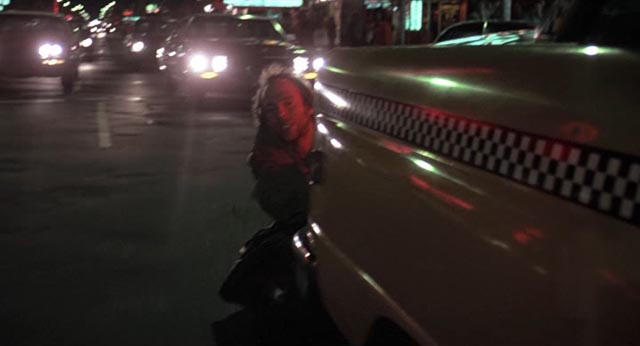
Although the script by Abby Mann and Ernest Tidyman strays towards overly emphatic point-making at times, it offers an excellent cast a collection of nicely drawn characters to work with – Moriarty does his nervous, neurotic thing as Bo, always watchable if not always quite plausible; Kotto is his usual larger-than-life self as Crunch; Susan Blakely is both tough and vulnerable as Patty Butler, the undercover officer; Elizondo and King are nuanced villains; and Dana Elcar, William Devane and Richard Gere provide strong supporting turns. The standout, however, is Bob Balaban as a legless Vietnam vet turned angry derelict who begs from and abuses the tourists in Times Square. He’s also the centre of the film’s strongest and most original sequence, a hair-raising chase in which, perched on his skateboard, he hangs onto the back of a speeding cab in pursuit of Butler and Stick.
The late ’60s and early ’70s were the heyday of movie chase scenes, from Bullitt to The French Connection, but this is without question one of the best. If the film’s second big action sequence isn’t quite as powerful, it’s only because it involves a foot chase which is inevitably less visceral. But that chase is also an excellent example of action filmmaking, with Bo pursuing Stick across rooftops and then along busy streets, with Stick dressed in nothing but his underwear. Although a younger audience might not be as impressed as I am, this sequence has a clarity in its camerawork and editing which makes it vastly superior to the overblown flashiness of something like the rooftop chase in whichever Bourne movie it was. Back then a good director was more concerned with spatial and temporal coherence in the action rather than with tossing some kind of visual frenzy at the screen.
Although Report to the Commissioner doesn’t have much of a profile – it wasn’t reviewed very positively when it was released and pretty much disappeared from sight for decades – it gains interest today not simply for a solid story and engaging characters, but also for its time capsule view of New York in the early ’70s, beautifully shot by Mario Tosi (among whose other credits are Brian De Palma’s Carrie and Richard Rush’s The Stunt Man). It’s a welcome rediscovery from one of my favourite cinematic periods.
*
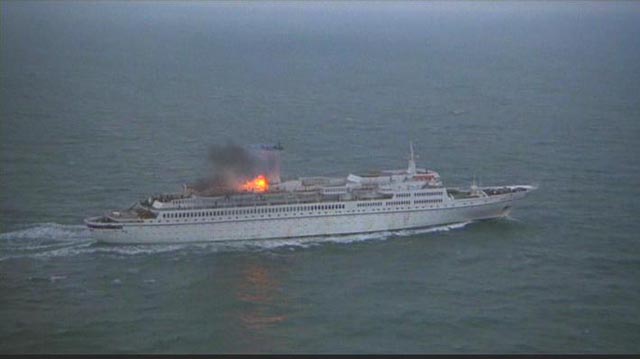
Juggernaut (Richard Lester, 1974)
I definitely did see Richard Lester’s Juggernaut when it came out in 1974. By then, I was more conscious of individual filmmakers, and was actually eager to see it because it was directed by Lester. I was aware of his work in retrospect because I’d seen The Mouse on the Moon (1963), A Hard Day’s Night (1964) and Help! (1965) when they first came out, and had read about though not seen his controversial How I Won the War (1967), Petulia (1968) and The Bed-Sitting Room (1969). From my own experience and from reading, I knew that he was a stylistically radical and innovative figure, so the idea of his tackling a big budget disaster movie in the middle of that genre’s box office run was intriguing. I was, however, disappointed by Juggernaut because there seemed to be little of Lester’s distinctive style on view; although slickly made, the movie was in almost every sense generic.
When Kino Lorber released the movie on Blu-ray a while back, I did see some reviews which treated it with interest and even respect, and even commented that it had a sense of self-awareness which made it as much a commentary on the genre as a straightforward representative of it. In re-watching it again, though, I was still unable to find much of interest. It’s certainly a competent representative of the period’s disaster movie cycle, but I see very little of Lester’s personality in it – which is often the case with his post-1970 work, a series of polished movies in various genres which seem to hark back to the days of the studios rather than the radical new directions explored in the ’60s (the Three and Four Musketeers, Royal Flash, the underrated Cuba, Superman 2 and 3; the best of these was Robin and Marian, one of the loveliest treatments of growing old gracefully seen in mainstream entertainment); it’s almost as if the failure of The Bed-Sitting Room caused Lester to give up on pushing boundaries and to settle into a rather ordinary career as a director-for-hire.
Which is not to say that Juggernaut doesn’t have some good points. These tend to centre around the actors – particularly Richard Harris as the larger-than-life bomb disposal expert assigned to defuse a series of big explosive devices on an ocean liner; his cocky sidekick David Hemmings; and a large collection of great character actors in minor roles, including Freddie Jones as the bomber, Anthony Hopkins as a Scotland Yard man, Ian Holm, Clifton James, John Stride, Shirley Knight. This was the second and last feature for child actor Adam Bridge, one of those really annoying kids you rather hope will get blown up. And Omar Sharif (who died on July 10) as the ship’s captain is a bit dull, while Lester favourite Roy Kinnear as the ship’s desperately ineffectual social director seems to have wandered in from a different movie, almost pointing towards an alternate, less conventional treatment of the story.
I suspect that Juggernaut was a key inspiration for Speed 2, which is not exactly a compliment. While the actual bomb disposal sequences do manage to generate a bit of suspense, the overall narrative is perfunctory, with Freddie Jones’ villain sadly underdeveloped.
*
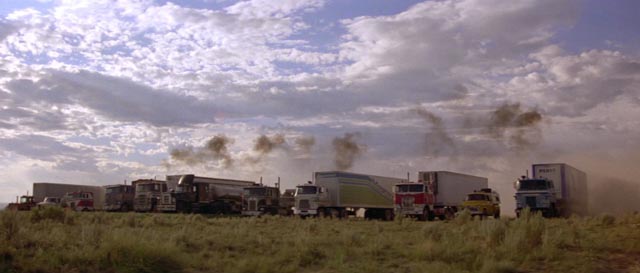
Convoy (Sam Peckinpah, 1978)
In all but name, this Kino Lorber Blu-ray of Sam Peckinpah’s second-last film seems like a Twilight Time release. The disk is loaded with extras, including a commentary track by Peckinpah experts Paul Seydor and Garner Simmons, joined as usual by Twilight Time’s Nick Redman, plus a 75-minute documentary, Mike Siegel’s Passion and Poetry: Sam’s Trucker Movie, one of a series of substantial documentaries by Siegel about the making of Peckinpah’s films going back to a 2005 overview of the director’s career, followed by other installments on the early films, then Major Dundee, Straw Dogs, The Killer Elite, Cross of Iron and Bring Me the Head of Alfredo Garcia. Seydor, Simmons and Siegel constitute a mini industry devoted to ensuring Peckinpah’s place in the pantheon, their devotion to his work admirable, although it occasionally seems to drift perilously close to making excuses for the often troubled filmmaker, who spent his career struggling with addictions, fighting producers and making claims for himself as an artist constantly fighting against philistines who stood in the way of his own greatness.
In the supplements to Convoy, these advocates have an even harder time sustaining their case than they did on Twilight Time’s excellent Killer Elite disk. By 1978, Peckinpah had pretty much squandered not only his own talent (which was undeniably major), but also the support of such long-time allies as Katy Haber, who had been key to getting him through every production after joining the Straw Dogs crew in 1971 as a dialogue director. Simmons and Seydor argue here, as they did on the Killer Elite disk, that Peckinpah’s talent was to some degree enabled by his alcoholism, but that when he took up cocaine in the early ’70s, that drug derailed him; while it drastically impaired his ability to make decisions, he was deluded into thinking that it actually stimulated him creatively. As a result, from Killer Elite on, his cocaine use undermined his filmmaking, a problem exacerbated by his going into projects without finished scripts, apparently in the belief that he could fix problems on the fly just as he was putting himself in a position where that was becoming impossible.
Ironically, Convoy, perhaps the single worst film of his career, ended up being one of his biggest box office successes, particularly in Europe and Japan. Nonetheless, it’s a confused and pointless movie, succeeding largely through its relationship to such good-ol’-boy movies as Smokey and the Bandit and Cannonball Run. Based on the novelty hit song by C.W. McCall, the script by B.W.L. Norton, who had a fairly undistinguished career as a writer before embarking on a longer career as a TV director, struggles to find some point on which to hang its highway action. Peckinpah had apparently been persuaded that truckers represented the modern equivalent of cowboys, struggling to maintain their rugged independence against the increasing constraints of civilization (which here seem to consist solely of a 55 mph speed limit imposed in the wake of the early ’70s oil crisis). Because the hints of social satire never really come into focus, the movie has to hang on the personal enmity between trucker Rubber Duck (Kris Kristofferson) and this story’s Smokey, Sheriff Lyle “Cottonmouth” Wallace (Ernest Borgnine), which escalates into an undefined protest by fellow truckers which draws in the police of three states, the National Guard, and an ambitious politician. Along as an observer, possibly intended as the audience’s point-of-view figure, is an equally vaguely defined photographer played by Ali McGraw, who flounders her way through the movie without ever managing to establish the critical position she seems to be intended to provide.
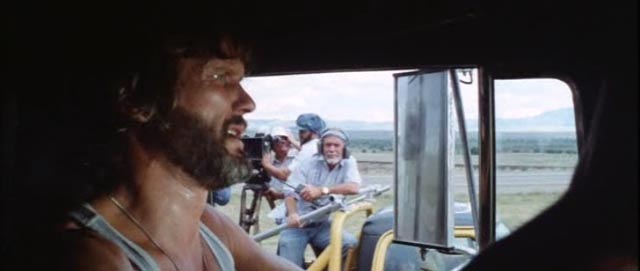
Much of Convoy is beautifully shot by Harry Stradling Jr, but Peckinpah seems to be unable to construct sequences which go anywhere; the mayhem is shapeless and unfocused and often dragged out way beyond the viewer’s patience. When the film takes a turn into darker areas with racist violence, the Smokey and the Bandit-style action becomes sour – the ridiculous climactic destruction of a small Texas town by truckers running wild and smashing through buildings negates whatever thin attempt the movie has been making to present them as heroes; the absence of visible victims can’t disguise the fact that this sequence has none of the deep moral ambiguity of the opening battle in The Wild Bunch, in which the self-interested Bunch and their opponents on the side of the Law show an appalling disregard for the lives of the town’s citizens. In Convoy, the destruction is presented as nothing more than spectacle for yahoos, a complete betrayal of Peckinpah’s own earlier attitudes towards violence in his movies.
Perhaps the most interesting thing in the group commentary is the revelation of the roots of the conflict between the Duck and Cottonmouth, something which is completely not apparent from viewing the movie: when the Duck and his friends stop at a roadside diner early on, one of the waitresses joins him in his cab for some birthday sex. What we who are watching simply don’t know is that this waitress (Cassie Yates, in the film’s only genuinely affecting performance) is Lyle’s wife. That this is completely thrown away, leaving the two men’s apparent past history unexplained, reveals just how disinterested Peckinpah was in the proceedings.
After it went way over schedule and over budget, executive producer Michael Deeley took the film away from the director, supervised the final edit and released it in the condition we now know, against Peckinpah’s wishes. It’s difficult to see how this material could have ever been turned into something more interesting, although Simmons and Seydor talk about the original director’s cut they saw at the time and how it exhibited some of Peckinpah’s art in the editing. But despite hearing the director rail against his oppressors in Siegel’s documentary, it’s hard not to believe that Deeley, seemingly a completely reasonable person in the documentary, was justified in doing what he did simply from a business point of view. There’s a long history of producers and studios tampering with directors’ work, and there are many examples of great work damaged by that tampering (the awful ending of The Magnificent Ambersons; a comparison between the studio cut of Touch of Evil and the “restored” version from 1998; a comparison between Harry Kumel’s original cut of Malpertuis [1971] and the producer’s hatchet job which all but guaranteed its quick descent into obscurity, and so on). But in the most celebrated cases, it’s almost always apparent that the filmmakers were right in their creative choices and the money men were wrong. A look at the messy director’s cut of Peckinpah’s final film, The Osterman Weekend (available on Anchor Bay’s 2-disk DVD release from 2004), is enough to indicate that by the time he turned in his version of Convoy he had lost his ability to shape his material into a viable movie.
Peckinpah had greatness in him as a filmmaker, but that greatness was eventually destroyed by his own inner demons. Without his name on it, Convoy would be nothing more than a forgotten artifact of its era.
*
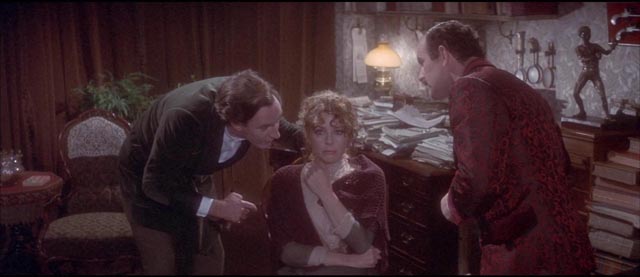
The Private Life of Sherlock Holmes (Billy Wilder, 1970)
Although made just a few years earlier than the ’70s movies described above, Billy Wilder’s The Private Life of Sherlock Holmes (1970) seems to belong to a different world – the classical period of Hollywood which, at its best, was rooted in fine writing, an attention to story and character, and well-honed craft. But this film too was famously cut severely before release, with a number of subplots removed completely from Wilder and co-writer I.A.L. Diamond’s elaborate, somewhat revisionist script. Presented as previously unknown stories by Dr. Watson about his adventures with the famous detective, kept hidden away until fifty years after Watson’s death because they were perhaps too revealing, the film captures the appeal of the Holmes stories while playing gently with the characters. This is, in fact, probably Wilder’s gentlest and most charming movie, devoid of the bitter cynicism which marks much of his best work, replacing biting satire with an affectionate nostalgia. Its subject is Holmes’ failure with women, his brilliant intellect combined with an emotional immaturity which prevents him from establishing any lasting relationships. Not surprisingly, the film comically addresses the underlying homoerotic implications of his longstanding relationship with the good doctor, although it easily dismisses any actual sexual content in that relationship; rather, these two friends are simply boys finding emotional security in each other’s company as they embark on various adventures.
There’s a kind of adolescent romanticism about Wilder’s Holmes (Robert Stephens); while he rejects the idea of relationships, he nonetheless becomes infatuated when chance brings a helpless damsel-in-distress to 221B Baker Street. Gabrielle Valladon (Genevieve Page), suffering from shock and amnesia, comes looking for help; apparently her engineer husband has vanished and someone has tried to kill her as she searches for him. Despite warnings from Holmes’ brother Mycroft (Christopher Lee) that he’s impinging on areas of national security, his investigation leads him to Scotland, the Loch Ness monster, a troupe of circus midgets, and German agents. Eventual betrayal merely reinforces his distrust of women and he and Watson retreat back to the safety of their shared flat – albeit, sadder and more disillusioned than before.
Beautifully designed by the great Alexandre Trauner and photographed by Christopher Challis, The Private Life of Sherlock Holmes is a lush period romance which perhaps came too late, seeming old-fashioned in 1970 and receiving mediocre reviews and poor box office returns. At this distance, separated from its own era, it can be seen as one of Wilder’s finest films and one of the most engaging cinematic explorations of Conan Doyle’s famous creation. (Much richer than the more commercially and critically successful Nicholas Meyer/Herbert Ross pastiche, The Seven-Per-Cent Solution [1976].)
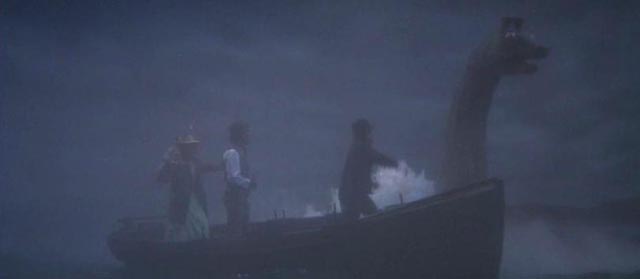
The big question, of course, is whether the studio’s drastic shortening of the film causes irreparable damage. It certainly alters the original intention of Wilder and Diamond, by narrowing the range of their original script from a multi-part story to a more or less single linear narrative. It would have been a bigger film, but perhaps a less focused one. The Kino Lorber Blu-ray duplicates the extras present on the old MGM DVD, including a lengthy reconstruction of the missing sections through script pages and on-set stills accompanied by surviving audio, and for one sequence surviving image with subtitles to supply dialogue from the missing soundtrack. The lost sections are:
An opening display of Holmes’ deductive abilities on a train taking him and Watson home at the end of a recent case.
An odd mystery involving an apparent murder in a room which has been literally turned upside down, with furniture nailed to the ceiling; this turns out to be a false case concocted by Watson himself in the hope of providing Holmes with a problem to work on which will get him away from the cocaine addiction which plagues him when he’s bored.
There’s a lengthy comic sequence aboard a liner in which Watson gets an opportunity to display the deductive techniques he’s learned from his companion; this more than the other missing parts seems like a comedy skit rather than an integrated part of the narrative.
Finally, there’s a flashback to Holmes’ days at university and the event which first instilled a sense of disappointment about women.
It’s impossible to say at this point how all of this would have played when integrated into the larger narrative of Holmes and Madame Valladon; but what is clear is that the film as it exists actually plays very well both as narrative and character portrait. The Private Life of Sherlock Holmes is a lovely, funny, sad ode to a whole lost way of filmmaking.
A pity then that Kino Lorber have used such a sub-par transfer; the Blu-ray looks very weak, little better in fact than the old DVD, with a faded, grainy print in which colours are unstable and darker areas full of digital noise. The film could have done with a major restoration effort, and really deserves it. In that sense, the disk is a huge disappointment, even though the content is quite wonderful.
Comments